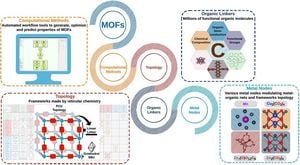Victorian voters are making their voices heard today in two pivotal by-elections for the seats of Prahran and Werribee, events seen as barometers for the current political climate under Premier Jacinta Allan.
With the ruling Labor government struggling to maintain its footing amid declining popularity, the elections are shaped by local concerns over rising costs and crime, as well as broader political dynamics. This year marks the first significant test for Allan since her ascension to the premiership, and observers are eager to see if she can steer her party through turbulent waters.
The Labor Party holds Werribee tightly, with former treasurer Tim Pallas’s resignation leaving room for local teacher John Lister to take the reins. Lister, who describes himself as deeply rooted in the district, hopes to bring positive change and advocacy for investments toward local issues. Meanwhile, his opponent from the Liberal Party, Steve Murphy, argues for drastic change, claiming, "The only way for the region to have new outcomes was to throw Labor out."
Werribee, which has been under Labor control since 1979, witnessed Pallas winning with nearly 46% of the primary vote during the last election. Despite Labor’s historical stronghold, political analysts are speculating about potential swings, indicating the growing discontent among voters as the cost of living remains the dominant concern for about 65% of constituents.
Over at Prahran, the race has taken on its own complications. Following the resignation of long-time Greens MP Sam Hibbins—who stepped down amid scandal—the seat presents unique challenges. Greens candidate Angelica Di Camillo must defend not only the party's ten-year hold but also navigate the political fallout from Hibbins's departure. She promises ambitious reforms such as combating rent hikes and bringing lower public transport costs to Victoria, echoing successful strategies from Queensland.
The Liberal candidate for Prahran, Rachel Westaway, expressed excitement about the day's events, commenting on voters’ preoccupations: "People are really concerned about the cost of living and crime." She hopes the Liberal Party can seize this opportunity to embody change, especially as voters appear disillusioned with their current representation.
These seats serve as more than local contests; they represent potential shifts within the state’s political framework. Analysts like Tony Barry argue, "Labor's primary vote is collapsing because of... concerns about the state of the economy and the personal financial insecurity." Similar sentiments reflect broader trends with current polling showing the Liberal Party at 51% on the two-party preferred scale compared to Labor's 49% across the state.
The impacts for Jacinta Allan extend beyond mere seat retention. A loss particularly strong at Werribee wouldn’t just signify the shifting tides; it could be the harbinger of significant repercussions for Labor's future prospects, particularly leading up to the federal elections later this year. According to Barry, should Labor fail to maintain Werribee, it would confirm doubts surrounding the Labor brand—weakening its position significantly for upcoming national voting.
On the ground, sentiment appears mixed, with early voting figures showing significant engagement, as over 13,400 residents had cast their ballots prior to the election day. Voter turnout is integral, serving not just to show engagement, but as loud indicators of public sentiment.
Polling stations opened at 8 AM and will close by 6 PM, as local residents take part to shape their political future. The fallout from today’s events promises to set the stage for future political maneuvers across the state and possibly the nation.
Both seats bear immense weight for potential shifts within the political engage; analysts expect their outcomes will not only influence Labor's standing but also will echo through federal contexts as well. Elections serve as both local tests and predictors of overarching political narratives—today's results will be more than numbers; they will be indicative of broader trends, sentiments, and the prevailing mood of the electorate as we look toward the future.



